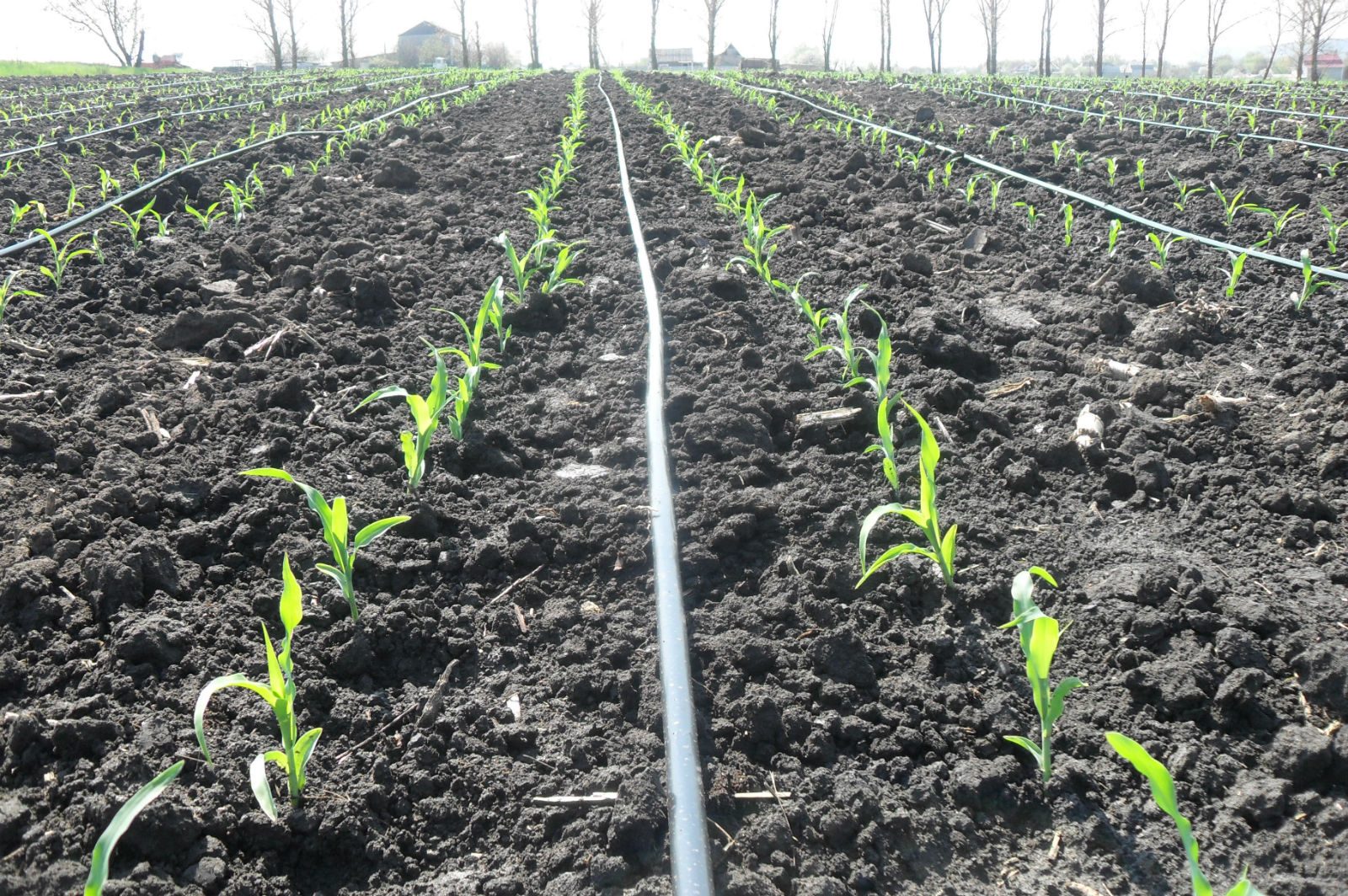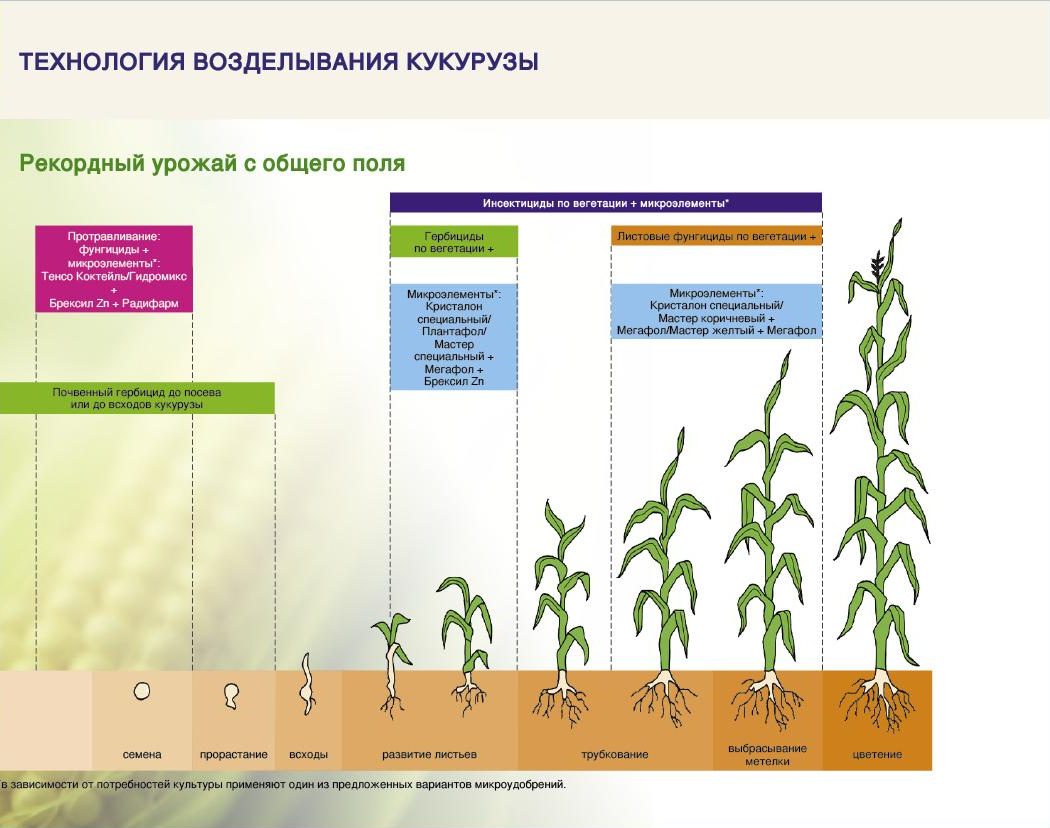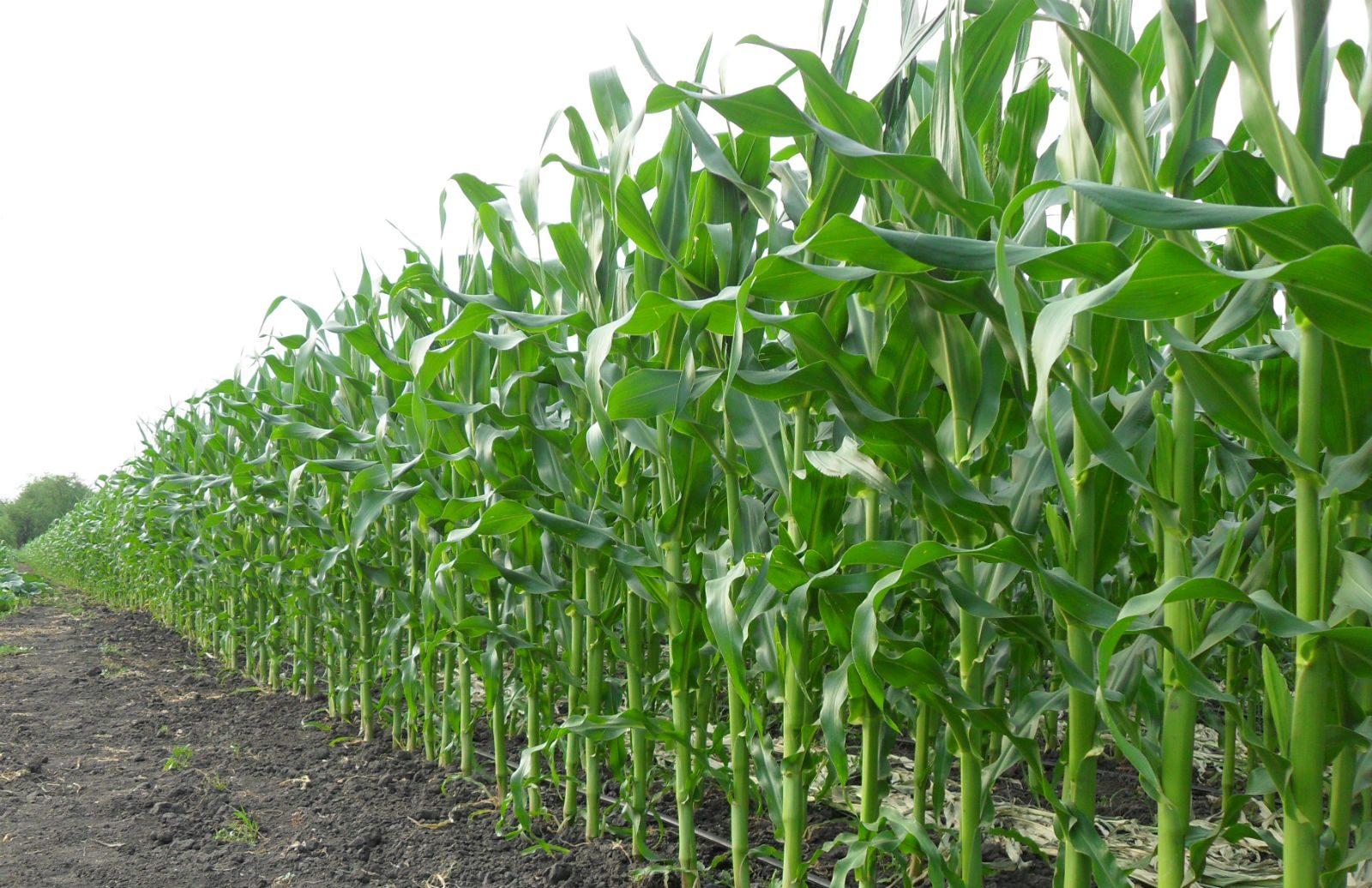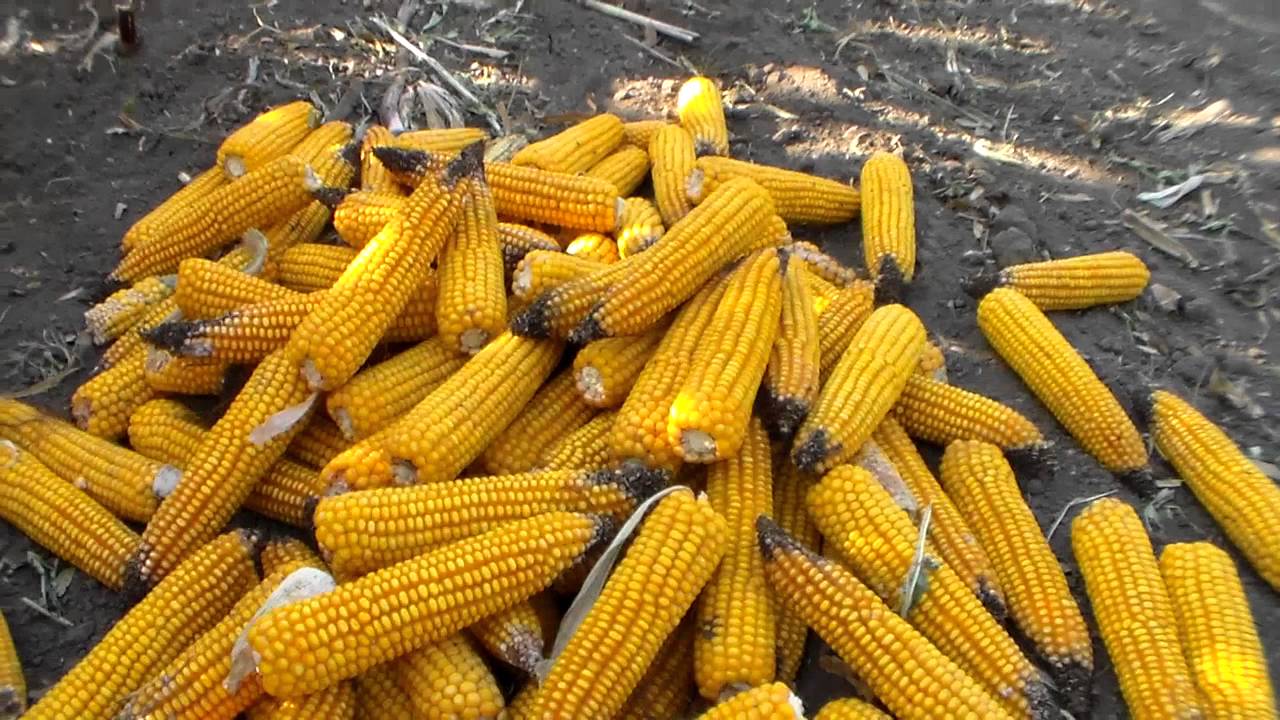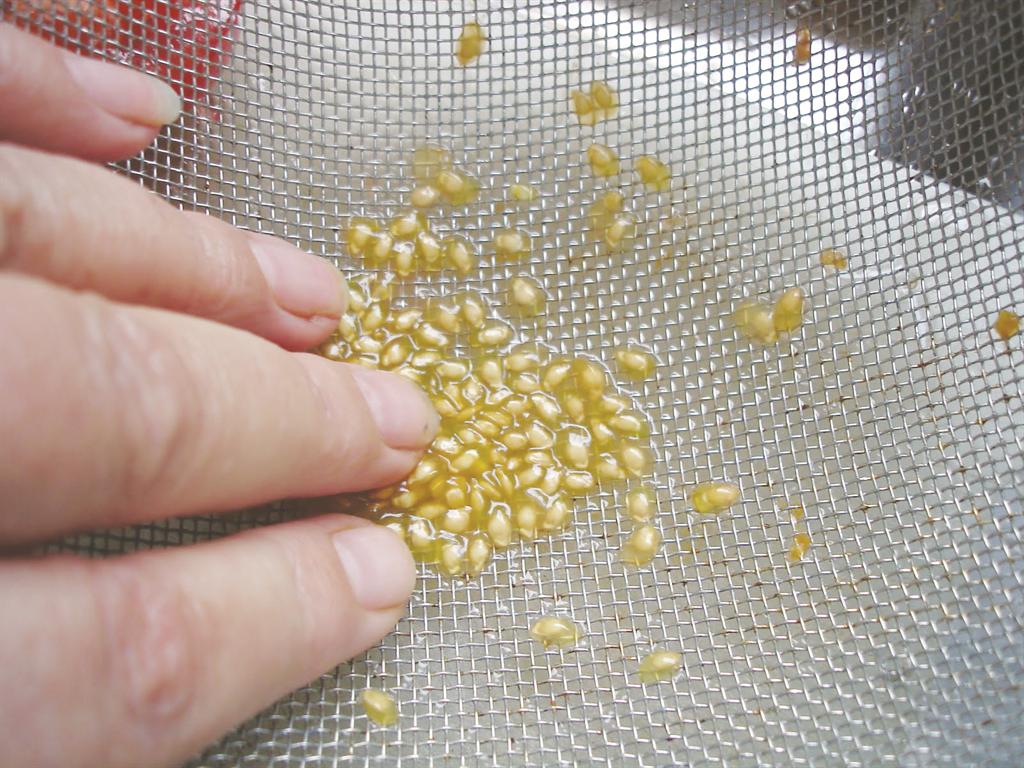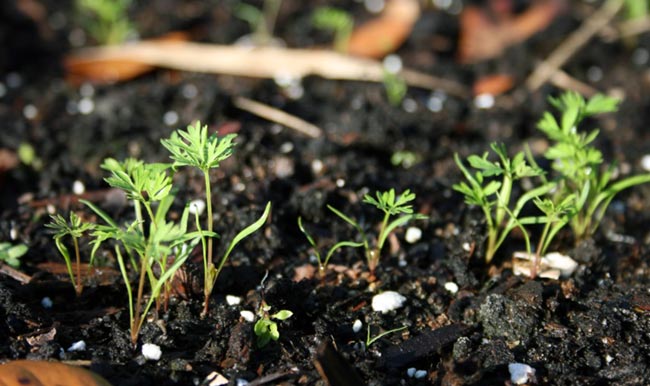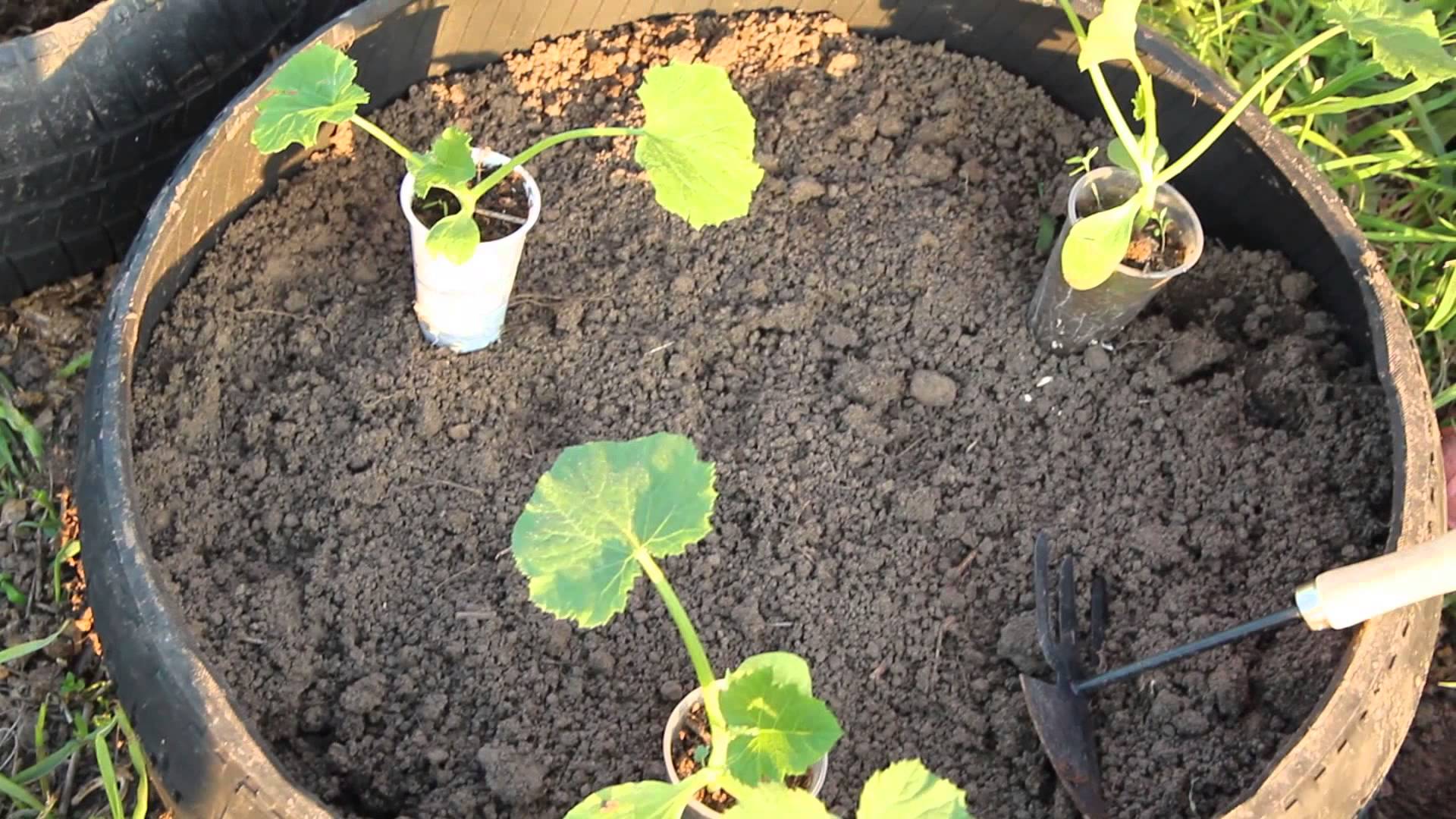Content:
Today corn is grown not only on an industrial scale, but also on its own summer cottage. The culture is considered demanding on conditions of detention. It is imperative to carry out pre-sowing treatment of seeds and soil, and then follow agricultural techniques and care rules. If you know how to plant corn correctly, the summer resident will be able to harvest a full harvest. You can use sugar grains for salads, side dishes, making popcorn.
Optimal growing conditions
Corn is considered a heat-loving, heat-resistant crop. Its seeds germinate at temperatures of 10 ° C and above. The optimal temperature for growth is between 22-25 ° C, in cold and hot weather, the growth processes of corn slow down.
The plant does not tolerate shade well and develops well with an abundance of sun. Corn also withstands drought relatively well. The largest yields can be obtained on fertile, weed-free, loose soil.
The culture is responsive to the application of organic and mineral fertilizers.
If you re-grow corn in the same area, you can also get a bountiful harvest, provided the soil is saturated with organic matter introduced in the previous year.
Sowing dates
If you sow corn at 8-10 ° C, seed germination will be long. Seedlings will be uncooperative, crops may get sick or mold. During a prolonged cold spring, with early sowing, plantings will be rare, frail, and will be late in time.
In case of late sowing, another threat arises. In the northern regions, the harvest will not have time to ripen, and in the southern regions, tender shoots can be dried up by the hot sun. When it is better to sow corn has long been determined by agricultural technicians. The optimal sowing time is determined by the soil temperature at the seeding depth. The thermometer in this layer of soil should show when measuring 10-12 ° C.
In the spring of 2018, it was possible to plant corn according to the lunar calendar:
- from 19 to 27 April;
- from 18 to 26 May;
- from June 16 to June 25;
- from 16 to 24 July.
In cold regions, it is recommended to sow crops by seedling, embedding grains in peat cups. The use of just such a container for sowing at home is due to the fact that the roots of the plant are susceptible to transplantation and it is better not to disturb them once again.
When to plant corn seedlings? Favorable numbers for this in March will be days from 21 to 27 and in April from 19 to 27.
Soil and seed preparation
For this culture in your country house, you need to choose a sunny area that is well protected from the wind. It is better to plan a garden so that legumes and pumpkins are grown in the neighborhood along with corn. Peas and beans will saturate the soil well with the nitrogen necessary for corn, and wide pumpkin leaves will cover its roots and protect it from overheating.
The soil should be well heated, with a high rate of water and air permeability, as well as a significant humus content. Mineral and organic fertilizers are applied to the garden in advance.
Since the future harvest directly depends on the quality of the seed, the largest seeds should be selected for planting without damage. The next step is to pickle the grains in order to get rid of pathogens of various diseases. To do this, you can use a weak solution of potassium permanganate, hydrogen peroxide, industrial pesticides. Another method of disinfection involves placing corn kernels in hot and cold water one by one.
Planting seeds in the ground
Planting corn is advisable after the threat of frost has passed. For those who do not know how to plant corn, it is useful to know that the rows are first marked at a distance of 80 cm from each other. The depth of each hole should be about 7 cm. How far should you plant the corn? It is important that plant roots do not interfere with each other. The corn planting scheme involves seeding the seeds with an interval of 35-40 cm.
You can also use the nest planting method, in which 4 seeds are placed in each hole. The landing hole in this case should be a little deeper - about 12 cm, a handful of humus is poured onto its bottom before planting.
How to plant a grain of corn, which side to plant in the ground? For this culture, the location of the seeds in the hole does not matter. A sprout that has broken through will find its way to light in any case.
After sowing, the garden bed is mulched with peat or sawdust. The seeding rate of corn per unit area is determined by the size of the seeds, the variety, and the sowing method. On average, 20 kg of seed is consumed per hectare.
Summer residents who planted this crop for the first time are interested in how many days the corn springs up. Germination times are directly dependent on temperature. At 22 °, seedlings will appear in three weeks. If the temperature stays around 10 ° C, sprouts will appear after a month.
Seedling method
In the northern regions, it is advisable to grow this culture with seedlings.
How to sow corn at home? For growing seedlings, the soil is best composed of two parts of compost, 1 part of peat and 1 part of sand. You can enrich the mixture by adding a little wood ash. Some have adapted to growing seedlings in rolls made of toilet paper, without using land.
Previously, the seeds are checked for germination by soaking them in a salt solution. After 5 minutes, the floating seeds are thrown away, and those that have fallen to the bottom are used for planting. Then the grains are germinated in a damp cloth or cloth, after which they are placed in cups one at a time, to a depth of 2-3 cm.
Sprinkle the seeds with sand on top. Room temperature is required for germination. Seedling care consists in watering them regularly, while moisture stagnation should not be allowed. The length of daylight hours must be increased to 14 hours. The seedlings will be ready for planting in open ground in about 3 weeks from the moment of emergence.
Care after landing
The rapid growth of culture is observed until the moment of flowering. In a day, the growth of green mass can be up to 12 cm. Then the plants give all their strength to form the cobs. Caring for corn is simple and consists of the following activities:
- Watering. Although corn is a drought tolerant plant, it needs plenty of water at certain times in its life. With enough moisture, the corn on the cob will be full, juicy and sweet. The first time the seedbed is abundantly moistened when 9 leaves are formed on the plants. The corn is then watered well during flowering. The third watering is necessary during the period when the grains are poured. After that, the soil should be moistened only if its top layer becomes excessively dry. You can equip drip irrigation on a corn bed.
- Loosening. It should be done after every watering or rain.This procedure must be done especially carefully while the sprouts have not yet appeared above the surface. It is recommended to loosen the soil to a depth of no more than 4 cm. This procedure promotes the growth of additional roots and provides access to the roots of oxygen. Loosening is especially important at the beginning of the season.
- Hilling. This technique helps tall plants to withstand gusts of wind, and also helps to retain moisture in the ground. We can say that hilling partially replaces loosening. In addition, it is more difficult for weeds to break through on hilled beds, which means there is no need for weeding.
- Fertilization. The first feeding is carried out in the phase of appearance of 6 leaves. You can use both organic and chemical fertilizers. You can take humus and compost from organic matter. Mineral substances will be delivered to the soil by a solution of ammonium nitrate or complex fertilizer.
The concentrated Lingogumate solution is well suited for corn. It is used by diluting two tablespoons of the product in 10 liters of water. Under each plant, 1 liter of the resulting fertilizer is applied. At the time of the appearance of panicles, a second feeding is made, consisting of mineral fertilizers. The third time of planting is fertilized during the formation of the cobs, using, for example, a solution of Agricola-Vegeta.
Experienced summer residents have their own secrets of growing corn, which they are ready to share with other gardeners:
- Before planting, the corn bed should be dug up to a depth of 30 cm, since this crop is very fond of loose soil. Carried out again after 2 weeks, this procedure will eliminate the appearance of a large number of weeds.
- Acidic soil must be neutralized with lime, adding 3 kg of substance per square meter of land. This will significantly improve yield performance.
- For an early harvest, special early varieties and hybrids are best suited. Their plants are not tall and at the same time form cobs up to 30 cm in size.
- No matter how attractive the picture on the seed package may seem, you should choose zoned varieties intended for cultivation in a specific area.
- If you plant corn along the perimeter of the site in a narrow strip, it will act as a hedge.
- In the second half of summer, lateral shoots are formed on the plants - stepchildren. They should be ruthlessly removed, only then can you count on a quality harvest. The grown shoots are broken off or cut off.
- If the flowering period fell on wet, cool weather, pollination may be incomplete and you can help the process artificially. You should cut off the male flowers (sultans) and shake them off the pollen above the cobs.
Although corn was considered a southern crop, it is now successfully grown in the middle lane and even colder regions. The main thing is to use the right variety and follow the rules.
